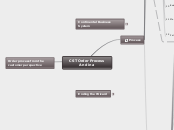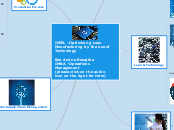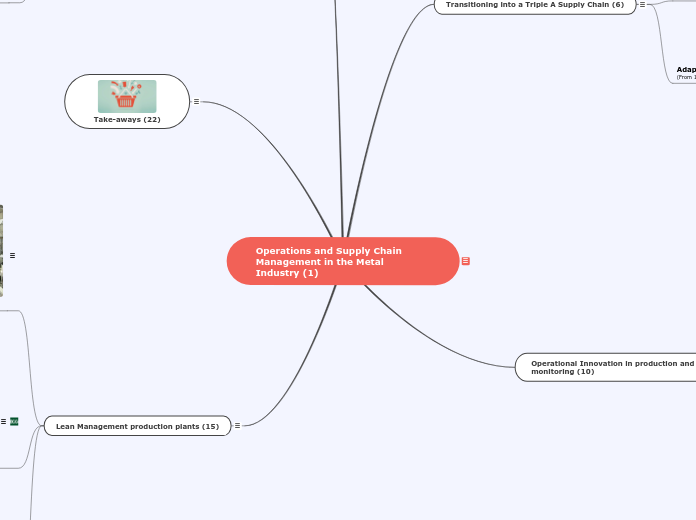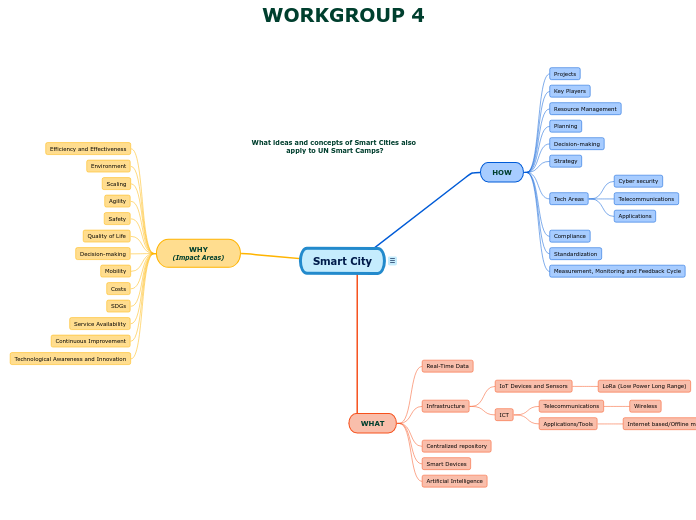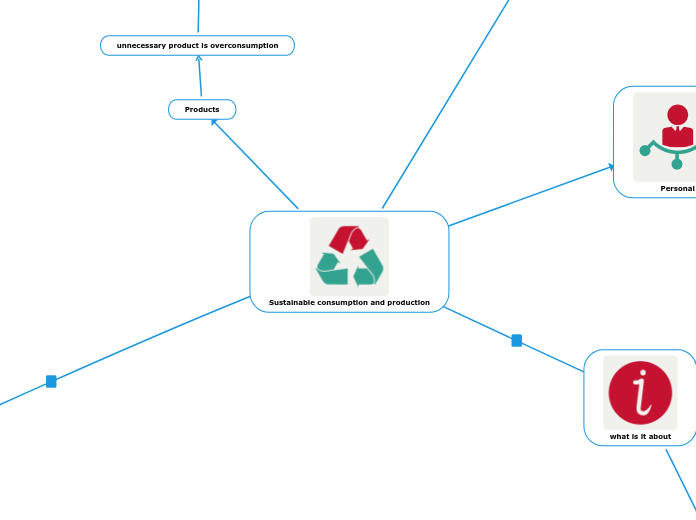Continental Business System
Welcome, Guest
This Mindomo Smart Map creates a toolbox map to support a brainstorming session. The Smart Map wizard helps you to define the session. You then save the map as a normal Mindomo map, and use it to support the brainstorming session and follow-up. You can refer back to this Toolbox area for reference information, process guidance and ideas if you get stuck.
This floating topic can be deleted after you save the map as a normal map.
Ending the Wizard
You can delete this topic from your saved Mindomo map.
Ending the Wizard
Once you have completed the setup wizard, you can save this map as a normal Mindomo map and use it to:
- Manage your brainstorm session, sharing the information and process with participants
- Capture ideas into the map, then rearrange and evaluate them
- Refer to the 20 creativity tools if you get stuck during your brainstorm session
This floating topic can be deleted after you save the map as a normal map.
Good luck with your brainstorm session!
CST Order Process Andina
Name your brainstorming session
Type in the name or subject of your brainstorming session and press Enter.
Order process from the customer perspective
Process
22 Tools
Things you can try when you get stuck, lose direction or encounter a problem in the brainstorming process.
These are just a few of many different approaches that you can use to destabilise an unproductive discussion. You can find many more on line. You can add your own here or even delete any that you dislike.
Invert assumptions
Identify the assumptions in the scenario, then reverse them to see how it changes the scenario and ideas.
What would a famous person do?
Select a famous person with marked character traits. What would they do in this situation?
Inject random words
Inject random words from a newspaper into the scenario description. to see how this changes the ideas around it
Try the Medici effect
How could this problem be solved in a completely different environment?
Is it like anything else that has been solved in a different way?
Use constructive language
Instead of asking "How can we solve X?", ask "How many ways can we achieve Y?" Assume that there are multiple solutions and you just need to find a few. This small difference in language can make a big difference to thinking.
Wear Six Thinking Hats
Think from six distinct perspectives with Edward de Bono's Six Thinking Hats:
- White Hat: focus on facts
- Yellow Hat: be optimistic
- Black Hat: be judgmental and look for problems
- Red Hat: react emotionally, have hunches and intuitions
- Green Hat: be creative and look for possibilities
- Blue Hat: thinking about thinking
Think in reverse
If you are trying to solve a problem that has symptoms, think in reverse. What could you to to make things worse, not better? What would have the biggest effect? What is the worst outcome you could achieve?
Can you reverse that thinking again to find a solution?
Justify ideas
Ask a participant to justify one of their ideas. The discussion may spark some alternatives.
Examine forces at work
What are the forces acting on this situation? Can you change the balance of forces?
Analyse the gap
Focus on the gap between where you are now and where you want to be. How can that gap be changed? What would make it even bigger?
Work in pairs
Challenge and push each other in pairs rather than in a group. You might get more insightful and honest inputs.
SWOT analysis
List the strengths, weaknesses, opportunities and threats of the scenario to highlight any unexplored aspects
Exaggerate
Scale the problem or opportunity up or down by 1000. How would you deal with it if it were 1000 times bigger or 1000 time smaller?
Do the opposite
What would happen if you did the exact opposite of the sensible answer?
Take a break
Take a break from the process and let ideas incubate. You may get more energy from the group tomorrow morning, or after doing something completely different.
Change perspectives
How does the scenario look to other people? Think and act like competitors, customers, enemies, friends, experts, uninformed people, different ages, different genders, people at different levels in the organisation, people in different industries. Decide whether the situation depends on your point of view.
Word associations:
Pick some key words from the ideas and find associated words. Do they lead to anything different?
Break rules
Define the rules that govern a process or situation. then try to break them or get around them
Work anonymously
Gather ideas anonymously, and vote on them
Challenge the scenario
Review the scenario again and challenge it.
- What assumptions have been made?
- Might it be incomplete or incorrectly described?
- It is really the situation, or is there something else behind it?
- Why and how has this situation arisen?
Watch for criteria drift
Make sure that you are consistent in your criteria when evaluating ideas. It is common for an idea to be rejected for a reason that has not been applied to all ideas. Do not reject an idea for a specific reason unless that criteria has been used from the beginning of your evaluation. If you realise that your criteria are incomplete, you may need to restart your evaluation.
Watch for groupthink: Ideas?
Groupthink can lead to loss of potentially valuable input, and poor joint decisions. It occurs when:
- A strong person influences others with their opinions or behaviour
- People stay silent when they disagree
- The group believes it must be right because of who it is
- There is strong external pressure to go in a particular direction
- There is little diversity of knowledge and backgrounds in the group
- Consensus is based on lack of objections rather than on positive support
- Some favourite ideas get attention without much consideration of alternatives
Make sure your group is exploring possibilities without judgement, and that all inputs are treated equally. Use some of the other tools to break down groupthink.
The process is the list of steps for running the session. You should
- Review it before the session
- Customise it if necessary to remove any steps that you do not want to include
- Refer back to this during the session.
Follow-up
Follow up on the actions and keep your team informed. Do not let brainstorm sessions disappear quietly, otherwise there will be less interest in participating next time.
Process Execution. Double check project execution and teams roles completion. December 2015. FJ/AV
Move to action
If your session has generated some worthwhile directions, set out the next actions. If there has been no result, then you may need to adopt your contingency plan. Think about:
- Developing ideas further
- Feasibility studies
- Obtaining support from other stakeholders
- Detailed design
- Prototypes or wire frame mockups
- Trials and tests
CST: Product portfolio Maintenance. Due date: October 2015. AV
Pricing: Corrected portfolio uploaded. October 2015. AV
Poms: New process applied to CBS. Due date: October 2015. JC/WA
Credit & Controlling: to review support processes, approval for new pricing uploads. November 2015.
Evaluate ideas
Now you can start to filter ideas against your criteria, and use the criteria to improve them.
If you are capturing ideas in your Mindomo map, use icons or priority markers to prioritise ideas.
If you end up with nothing to pursue, improve your scenario description and criteria, and go around again or at another session after people have had time to think things over.
Set minimum criteria
Brief your team on the minimum criteria for filtering ideas. This may involve challenging the scenario again, as they might not agree with all the criteria.
Criteria or requirements
What are your minimum criteria for moving forwards with a new idea? You will need some sort of baseline against which to filter ideas. Ideas should be filtered against the same criteria. Developing and agreeing the criteria can help to refine ideas. If you already know some of the criteria, set them out in advance, otherwise you may lose sight of them in a brainstorming session.
Import Process: New process creation and descrption. Due date: October 2015. Responsible: JC/WA
Credit: Credit blockage as an exception, not as a rule. Due date: October 2015. Responsible: PS
CST Management: Clean-up portafolio entered in SAP. No time wasting during entering new orders due to missing articles extended in SAP, pricing, etc. Due date: October 2015. Responsible: AV
Add a criterion
Add a criterion or requirement against which you will filter and score ideas. Think about:
- Performance, must-have or must-do factors
- Investment, costs, resources, timescales or other constraining factors
- Feasibility
- Alignment with strategy
- Acceptable risk levels
Incubate ideas
Give participants some time to reflect on the ideas generated, before evaluating them. New ideas and insights can arise after some time away from the session.
Combine and build on ideas
Without evaluating or judging, build upon the ideas from other people, using them as triggers for different ideas.
This is why it is essential to avoid evaluating ideas. A strange idea could be impractical, but might be a stepping stone to something that is practical.
Organise and group ideas
Group similar or related ideas together. Look for emerging patterns and gaps created by patterns.
Subtema
CST stock in SAP. Maintenance in terms of article extension, MTP´s, prices. Replenishment orders in WH´s to cover dealers demand on the highest turnover products.
Gather ideas from all participants, avoiding unnecessary repetition of identical input.
You can gather ideas in this map as floating topics, which helps to avoid the implicit prioritisation of lists. It also makes them easy to rearrange afterwards.
If you get stuck, try some of the tools in this toolbox.
Rules
- Do not prioritise or evaluate ideas when gathering them. Do not suppress ideas because they are too strange or obscure. Censure anyone who does this directly or indirectly.
- Do not attach ideas to people. Ideas become owned by the group when they are submitted.
- Aim for sheer quantity, not quality.
- Keep on track and keep the objective and the scenario in mind all the time. Limit off-topic discussions that will never rejoin the main thread.
Personal brainstorming: -STock in regional WH´s. -Regular/DS process -Exceptional air freights or LCL orders process
Give participants some time to come up with individual ideas. These can often get lost in group discussions.
Incubate the problem: From our customers perspective, our leadtimes are reaching up to 120 days, which is creating problems: stock, sales goals, customer satisfaction, etc.
Give participants some time to think about the problem. Initial reactions can often change after some incubation time.
CST Team and support Teams of Andina
Brief the team on:
1. The objective for this session
2. The time constraints
3. The scenario
4. The contingency plan
5. The process that you will be following, and the rules at each stage.
Contingency plan
The contingency plan is the route that you will take if nothing better can be found.
Contingency plan
Having a contingency plan guarantees action. If the brainstorming process collapses or fails to produce anything, the contingency plan states what you will do instead. The contingency plan may be an unattractive route, and can include doing nothing at all. It helps to avoid leaving brainstorming sessions in an inconclusive state, and could help to motivate participants to come up with something better.
Action plan/contingency: Process Poms creation.
Add an action
Add an action to the contingency plan. Identify the results that the contingency plan will lead to.
Team
The team
Who will take part in this session?
Paúl Salazar. Controlling Manager. Credit & Controlling Role on Process.
José Calle. Imports Chief. Operational leader of process.
Wladimir Albornoz. Logistics Andina Manager. Control on Traffic, Logistics execution.
Andrés Villalva. CST Andina Manager. Project Manager.
Federico Jiménez, Americas CST Manager. Control on Project Execution
Add a team member and role
Add a team member for this brainstorming session.
- You may need someone to write up the ideas, but whoever does this will not be able to fully participate. They should not be filtering and interpreting input, nor trying to think of their own ideas while capturing other input.
- You will need someone to lead the group, who may find that this limits their participation. This should not be someone who might intimidate others through their seniority or expertise.
- A group size of 5 to 7 is ideal. Bigger groups do not always work better.
- A mix of backgrounds and knowledge will work better than a group of people who all think along similar lines.
- People who are willing to question assumptions and the status quo are just as valuable as people with subject expertise.
Scenario
The design brief, problem or opportunity that this session is addressing
Scenario
The scenario is your briefing for participants. It could be a design brief, a problem or an opportunity. You should pursue only one scenario in a brainstorming session. Do not try to address multiple questions.
UGM/AGRO/MPT/OTR/INDUSTRIAL: More articles, more origins, more complexity. With a better import process, most efficiency to perform
CST is coming with new products, developments and will add more complexity to our internal processes. Thus, it is time to find better routes in search for efficieny
This brainstorming and Process description is to set an action plan to eliminate bottlenecks on processes
Leadtimes on DS orders have reached up to 120 days
Add a line describing the scenario
Add a line describing an aspect of the scenario. Some of your participants may already understand it, and some may not. Both positions are useful. Explain the special features of the situation that need inventive ideas. Challenge your participants.
Time constraints
Time constraints
You should set some time constraints, but make sure that people do get time to think. Two short sessions over a couple of days may be much more productive than one long session.
Time allowed
Time allowance
How many sessions and how much time for sessions?
Objective
The objective of this brainstorming session
To improve order process of CST in Andina
What is your objective?
State a specific objective for your session. Make sure your objective includes follow-through and actions. Avoid using brainstorming to make a decision, to gather opinions, or to simply come up with input with no plan to change anything. Common objectives include:
- Creating something new
- Solving a problem
- Maximising an opportunity
Overview
The foundations of a successful brainstorming session are:
-> A clear objective
-> A well-defined problem or opportunity
-> A group that understands the brainstorming process
-> Follow-up and action
The advantage of making these visible in a map is that everyone can see the plan and rules, and can refer back here to resolve blockages or loss of direction.
